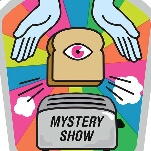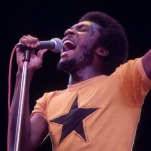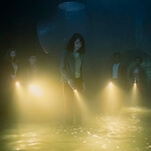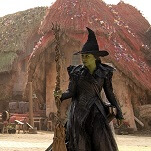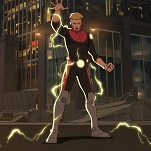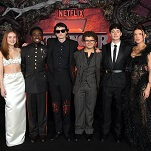Seeing without crosshairs: a survey of the first-person non-shooter
Chaz Evans is a co-director of Chicago’s Video Game Art (VGA) Gallery, an organization that promotes—you guessed it—video game-related art. We’re fans of the work that the VGA is doing, so we invited Evans (and previously, his partner Jonathan Kinkley) to give our readers a game-centric art history lesson. Here’s his look back at first-person games that forgo violence for, well, just about anything else.
The center of gravity around the first-person shooter genre cannot be over-emphasized. Shooters function as more than a pop cultural phenomenon with astonishingly wide appeal. To some they are the main event of video game competition, in more than one sense. Competitive FPS play, both online and in eSports tournaments, demands harsh training and discipline that combines the attitude of athletics with kinesthetic repetition, not unlike learning a musical instrument. (I once spoke to a competitive Halo player who bragged about intentionally burning the thumb pads off his controller to build callouses and play for longer durations. He also claimed it was totally worth it.)
But beyond players of the game, there is also a competition between FPS games themselves, for both developers and connoisseurs of the genre. Who will move the needle forward in an increasingly vertical and disciplinary conversation on calibrating a war game just right? Who will balance the weapons, design the flow of the boards, or integrate player classes perfectly? It’s a community singularly driven toward a very specific goal that cribs the obsessive historical arc of modernist painting over the 19th and 20th centuries (i.e., who will finally achieve pure painting?). In a genre with so many releases and a rather strict format (first-person perspective, interaction with the world through ranged and, sometimes, melee weaponry), what can possibly be improved? And when improvements do come, is the achievement really that great a departure or just a piecemeal adjustment packaged as something brand new?
The strategy for how to move the genre forward might not be a matter of recalibrating crosshairs or introducing new weapon customizations, but instead playing the FPS-competition meta-game by stepping outside of it. The 7DFPS game jam, for example, has sent a video game-worldwide call to spruce the genre up for three years running. Without having any particular dogma or position other than to “keep first-person shooters interesting,” the open game jam carries a subtext of letting preconceptions about FPSs go, simply by cultivating a temporary creative zone for new ideas. The challenge is simple: Create a new FPS in seven days, and then submit it. The game jam’s efforts have returned some stylistic and innovative results altogether removed from space marines or contemporary theaters of war.
Several of the titles created during the event invert or mutate the act of shooting in unfamiliar ways. For example, Opera Sentai by Twoplus Games politely asks for access to your computer’s microphone before you begin and then thrusts you into a cartoon space combat scenario where rather than clicking the left mouse button, singing fires off rounds (over an electronic version of Andrew Lloyd Webber’s Phantom Of The Opera theme). Cactus Farming Simulator 2014 by Chris Maire replaces bullets with projectiles that create or harvest beautifully rendered cactuses. Elemental Zeal’s Slop Slinger replaces guns with cafeteria food to be tossed at rival classmates.
Other titles make the yet-more experimental choice of omitting shooting altogether. Some achieve this with a non-anthropocentric approach and instead use a first-animal perspective: godspeed, noble spirit by nine baobabs, Ratta Tat Tat by mikethetike, and Voxel’s Bird of Prey offer the perspectives of a house fly, a rat, and a hawk, respectively. Other titles exchange weapons for the absurd, disturbing, or psychedelic. This raises the question: How did we get to a point where removing weaponry from first-person perspective could be seen as a novel departure?
While the energy that 7DFPS infuses into the genre is needed and well received, the event is an important part of a larger first-person experimentation ecosystem. Many first-person non-shooter games can be situated in different sectors of game-making culture, as well as different points in video game history. The success of deviations like Portal, Dear Esther, The Stanley Parable, and Gone Home stand as evidence that the genre is well established and diversified. For further evidence of the genre’s volume look no further than Gameological’s previous Inventory of 21 games that include virtual photography (and add Michigan: Report From Hell to the list for good measure). Games like Pokémon Snap ask what could be a better use of video game-enabled vision than video game image-making? Going even further, the following examples offer different contexts for the lack of ranged weaponry, and how the option to replace guns with something else can be viewed as a statement on what we can do with the power of sight in imaginary spaces.






